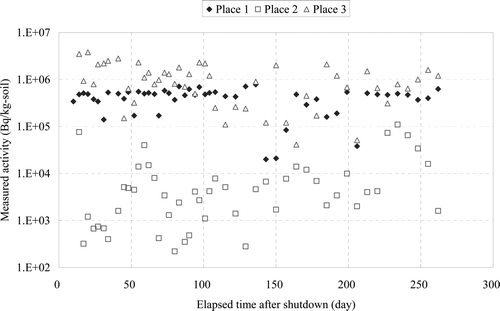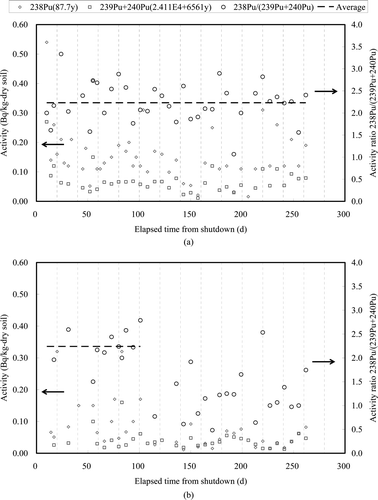Abstract
Based on periodically performed radioactivity measurements on soil samples in the site of Fukushima Dai-Ichi Nuclear Power Station, activity ratios to 137Cs of fission product and heavy nuclides were obtained for Sr, Nb, Mo, Tc, Ru, Ag, Te, I, Ba, La, Pu, Am, and Cm isotopes. By exponentially fitting or averaging, the activity ratios at the core shutdown were estimated. Using correlations of activity ratios of 134Cs to 137Cs, and 238Pu to the sum of 239Pu and 240Pu against fuel burnup, burnup of the fuel sourcing the deposited activity of the soil was estimated. The activity ratios to 137Cs of each nuclide on the deposited activity were divided by those calculated on the fuel at the shutdown to obtain the deposited activity fraction of each nuclide as a relative value to 137Cs, which also corresponds to the deposited fraction of each element as a relative value to Cs. The obtained deposited fractions relative to Cs are the orders of 10−4 to 10−2 for Sr, 10−5 to 10−3 for Nb, 10−2 to 10−1 for Mo, 1 to 10 for I, 10−3 to 10−2 for Ba, 10−2 for La, 10−6 to 10−3 for Pu, 10−6 to 10−4 for Am, and 10−7 to 10−5 for Cm. The deposited fractions for Tc, Ag, and Te were not estimated due to the lack of the calculated inventories in the fuel for the relevant measured radioactive nuclides.
1. Introduction
One of important part of severe accident analysis of nuclear reactors is to calculate the amount of radioactivity released from multilayered barriers such as a pressure vessel, a containment vessel, and a reactor building and deposited on the environment, which is called source term analysis. The analysis methods depend on various models treating complicated phenomena related to chemistry and physics, and their validations are crucial.
After the severe core damage of Fukushima Dai-Ichi Nuclear Power Station, radioactive material leaked from the reactor buildings. Measurement of radioactivity was periodically performed in various points inside and outside of the power station. The information of the released and deposited radioactivity is important to understand the process of the severe accident. Nishihara et al. [Citation1] have reported a study of activity release ratios from the damaged core to stagnant water. The present study focuses on the measurement data of radioactivity on soil in the site, which have been performed by Tokyo Electric Power Company (TEPCO) since March 2011 and publically available [Citation2]. The data include typical radioactive fission product (FP) nuclides such as Sr, Nb, Mo, Tc, Ru, Ag, Te, I, Cs, Ba, and La and heavy nuclides such as U, Pu, Am, and Cm. Summarizing the measured data in terms of relative activity ratios to that of 137Cs, the activity ratios at the core shutdown date were analyzed by the decay correction for the nuclides of relatively short half lives. On the other hand, the radioactivity ratios of 134Cs to 137Cs, and those of 238Pu to the sum of 239Pu and 240Pu were obtained for the core shutdown date. Those ratios were used to estimate the burnup of the fuel sourcing the deposited radioactivity using correlations of these ratios against fuel burnup, which were obtained based on the previous calculations and measurement data [Citation3]. The activity ratios to 137Cs of each nuclide on the deposited activity were divided by those calculated on the fuel at the shutdown to obtain the deposited activity fraction of each nuclide as a relative value to 137Cs, which also corresponds to the deposited fraction of each element as a relative value to Cs.
The first part of the present article describes the summary of radioactivity measurements on the soil samples, the second shows the deposited activity fraction, and the last conclusions.
2. Summary of radioactivity measurement on soil samples
As a part of radiation monitoring conducted by TEPCO in the site, soils were sampled at five places within 1 km from the common exhaust stack of the units 1 and 2 on 21 March, and the radioactivity was analyzed [Citation2]. The results of the two places showed that the radioactivity ratios of 238Pu to the sum of 239Pu and 240Pu were 2.0 and 0.9, respectively, which indicated that the radioactivity came from the damaged core since the radioactivity ratios were far larger than those normally observed in the radioactivity of Pu isotopes in the soil in Japan. Gamma-ray spectroscopy was also applied to all the samples for the Pu analysis to indentify gamma-ray emitting nuclides, which were typically FP nuclides. After this observation, periodical sampling of soils at three fixed places in the site, and the radioactivity analysis have been conducted and are publically available from the web site of TEPCO [Citation2]. The sampling places are shown in [Citation2]. The places were selected about 500 m from the common exhaust stack of the units 1 and 2 and wide enough to take samples. Furthermore, the samples in the places 1 and 3 were taken from the surfaces which adjoined but did not overlap each other; the place 2 were in a wood for bird watching, and the samples were taken from the same surface but different depths until the radioactivity was not detected and then the sampling surface was moved to the next one, and so on. The information of the reports has the sampling place, sampling date, analysis date, analysis institute (the Japan Atomic Energy Agency or the Japan Chemical Analysis Center), nuclide, radioactivity in Bq/kg dry-soil and some comments. The activity was also reported in Bq/kg wet-soil for a small number of samples. The activity for the FP nuclides except Sr isotopes, Sr isotopes and heavy isotopes was reported in separate sheets. It is also mentioned in the comments that all samples for the analysis of Pu isotopes were analyzed by gamma-ray spectroscopy to determine the activity of gamma-ray emitting nuclides (the FP nuclides except Sr isotopes). The reported radioactivity is listed with the half lives and the numbers of measurement data for each place in . It should be noted that the measurement data are sparse for 99Mo, 99mTc, and 106Ru. In addition to the nuclides in , the activity of 7Be (half life = 53.29 days) and 125Sb (half life = 2.758 years) was reported once in the place 1. However, there was no other data so that these nuclides were not studied. The activity of uranium isotopes was also reported; however, the activity ratios were almost agree with those of natural uranium [Citation4]. This indicates that the deposited activity of uranium isotopes originated from irradiated fuel of enriched uranium is far less than the activity of natural uranium. Appendix 1 describes decay chains to produce the relevant radioactive nuclides.
Figure 1. Locations of the three places for periodical radioactivity measurement in the site [Citation2].
![Figure 1. Locations of the three places for periodical radioactivity measurement in the site [Citation2].](/cms/asset/bcd6d619-5965-41e9-9e85-b8c4418e4589/tnst_a_740355_o_f0001g.gif)
Table 1. Nuclides of radioactivity measurement on the soil samples in the site from 21 March 2011 to 28 November 2011 [Citation2].
2.1. Fission product nuclides
The measured radioactivity of 137Cs is plotted against the elapsed time in day after the shutdown of the reactors (hereafter referred to as the “shutdown”) as an example and shown in . The measured activity varies with elapsed time for the places 1–3. This would be due to heterogeneity in deposited activity on the surface of soil. Changes in the activity in the place 2 are far larger and the activity level is lower than those in the places 1 and 3, which is attributed to the special sampling strategy as mentioned before. In order to extract effective information, measured activity for each nuclide was divided by that of 137Cs for each sample (hereafter referred to as the “activity ratio to 137Cs”). shows those plots for the places 1–3. In order to confirm the validity of data of the FP nuclides, decay constants were calculated by fifing the data by an exponential function of the elapsed time. The obtained decay constants in 1/day are listed in and compared with nominal values. The nominal values are the decay constants of the specific nuclides minus that of 137Cs. The decay constants based on the measurements are attached with fitting errors (1σ). Those without uncertainties are those obtained by connecting two measurement data. The decay constants based on the measurements for 99mTc, 106Ru, 132I, and 140La have considerably difference from the nominal values.
Figure 3. Activity ratios to 137Cs of FP nuclides against elapsed time after the shutdown. (a) Place 1, (b) place 2, and (c) place 3.
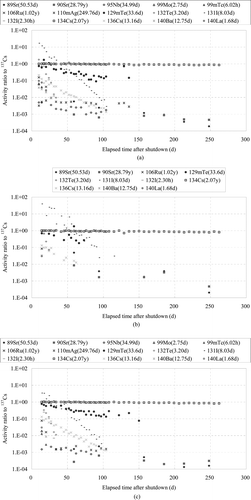
Table 2. Comparison between the decay constant of the measured activity ratio to 137Cs and the nominal value defined by the decay constant of each nuclide minus that of 137Cs.
The decay constants and relative activity of 99mTc (half life = 6.02 h) are expected to be close to those of 99Mo since 99Mo is the mother nuclide of 99mTc and has a much longer half life (2.75 days) and a radioactive balance is achieved. As expected, the decay constants and activity ratios based on the measurements are roughly comparable to those of 99Mo. The large deviation of the decay constant of 106Ru from the nominal value was observed. One of the reasons may be due to sparse data for obtaining the decay constant in the places 1 and 3. A concern on these data is sparseness for its relatively longer half life (1.02 years). Further study is necessary for the confirmation of the reliability of the data. The decay constant and activity of 132I (half life = 2.30 h) are expected to be close to that of 132Te (half life = 3.20 days) which is the mother nuclide of 132I. In this point, the decay constants and activity ratios based on the measurements are comparable to those of 132Te. The decay constant and relative activity of 140La (half life = 1.68 days) are expected to be close to those of 140Ba (half life = 12.75 days) because of the same reason. Even though deviations from the consistent values are relatively large, the measurement values were adopted in the present study.
By fitting the decay data of the activity ratios to 137Cs by an exponential function, the activity ratios at the elapsed time = 0 (the shutdown) were determined for the FP nuclides. The obtained activity ratios to 137Cs with fitting errors (1σ) are shown in . The values without errors are those obtained by connecting two measurement data. For 99Mo and 106Ru, which are shown for the place 1, a different processing of data was applied since the measurement data were sparse. In the case of 99Mo, the two data at the places 1 and 3 were averaged for the activity and sampling date, and the nominal decay constant was applied to obtain the activity ratio at the shutdown. In the case of 106Ru, five measured data at the places 1–3 and three data measured at three places other than the places 1–3 in the site [Citation5] were averaged for the activity and sampling date, and the nominal decay constant was applied to obtain the activity ratio at the shutdown. As mentioned previously, further study is necessary for the confirmation of the reliability of the data of 106Ru. illustrates the activity ratios to 137Cs in . Here the values of 99Mo and 106Ru are shown as those of the place 1. The errors also attached to the value only at the plus side. The error is not shown for the nuclides that the errors were not assigned. Considerable differences of the activity ratios to 137Cs between those of the places 1 and 3, and that of the place 2 are observed for Sr isotopes and 131I.
Figure 4. Activity ratios to 137Cs at the shutdown for the places 1–3. (a) FP nuclides and (b) heavy nuclides.
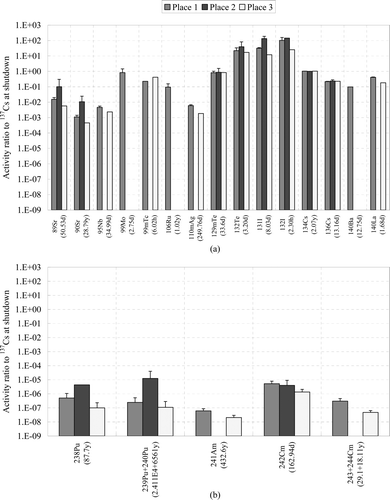
Table 3. Activity ratios to 137Cs of FP nuclides at the shutdown of the reactors for the deposited activity.
2.2. Heavy nuclides
Activity ratios to 137Cs are plotted for heavy nuclides including U isotopes and shown in . The activity ratios among U isotopes for the places 1–3 are close to those of natural U as mentioned previously. The activity ratios scatter against samples. Average values through the samples are listed in for Pu, Am, and Cm nuclides with the errors, which are standard deviations (1σ). The value without an error is that of single measurement. The data of 242Cm were expected to follow the specific decay constant, the decay constant of 242Cm minus that of 137Cs; however, averaging was applied for simplicity. The errors are considerably large because of large scattering of the activity ratios to 137Cs as shown in . illustrates the average values. Considerable differences of the activity ratios to 137Cs between those of the places 1 and 3, and that of the place 2 are observed for Pu isotopes. This would be related to the difference in the sampling strategies.
Figure 5. Activity ratios to 137Cs of heavy nuclides against elapsed time after the shutdown for the places 1–3. (a) Place 1, (b) place 2, and (c) place 3.
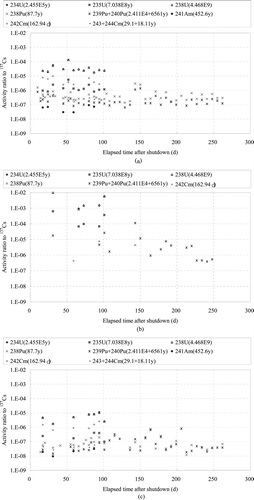
Table 4. Average activity ratios to 137Cs of heavy nuclides.
3. Deposited radioactivity fraction
One of the aims of the present study is to estimate how much specific element have been released from the reactor buildings and deposited on the ground (hereafter referred to as “deposited”) in terms of relative values to Cs. Here, NX
and NCs
are the atomic number densities of elements X and Cs, respectively; AXi
and A
137Cs
are the activity of an isotope in the element X and 137
Cs, respectively. The bottom suffixes R and I means the atomic number densities of deposited atoms and atoms existed in the fuel at the shutdown. The fraction of the deposited atoms of X, , to that of Cs,
, is defined by
Derivation of this equation is shown in Appendix 2. The values of the numerator of the right side in Equation (1) were obtained and are shown in and for the FP and heavy nuclides. Now necessary values are the denominator of the right side.
3.1. Burnup of fuel sourcing deposited radioactivity
3.1.1. Activity ratios as burnup indicators
Some of the activity ratios between specific isotopes give information of burnup of irradiated fuel. In the present study, the activity ratios of 134Cs to 137Cs, and 238Pu to the sum of 239Pu and 240Pu were investigated. As shown in Appendix 1, in the chain of the mass number 134, short-lived FP nuclides decay to a stable nuclide 134Xe; while direct production of 134Cs by fission is negligibly small. Most atoms of 134Cs are produced by neutron capture of stable isotopes 133Cs (cumulative fission yield = 6.70% in 235U thermal fission, for example) during irradiation of fuel. Therefore, the production rate of 134Cs mainly depends on the number density of 133Cs, the microscopic capture cross-section of 133Cs and the neutron flux. On the other hand, the production rates of 137Cs (cumulative fission yield = 6.27% in 235U thermal fission, for example) and 133Cs depend on the macroscopic fission cross-sections of fuel and the neutron flux. The radioactivity ratio (proportional to atomic density ratio) of 134Cs to 137Cs after an irradiation time is roughly proportional to the product of time and a neutron flux, which almost corresponds to the fuel burnup, as shown in Equation (2).
Here Y 133(t) and Y 137(t) are the cumulative fission yields of 133Cs and 137Cs, respectively, as a function of irradiation time t, and Σf (t), φ (t), and σc 133(t) are the macroscopic fission cross-section of fuel, the neutron flux and the microscopic neutron capture cross-section of 133Cs. The variables without (t) are time-independent values. In Equation (2), elimination of 133Cs by neutron absorption and that of 134Cs by decay are neglected for simplicity so that the activity of 134Cs would be overestimated. The activity ratios of 134Cs to 137Cs at the shutdown are close to 1.0 as shown in . The author have reported that the ratios are 1.05 ± 0.02, 1.00 ± 0.02, and 1.05 ± 0.01 for the places 1, 2, and 3, respectively [Citation6]. Those were obtained from the measurement data of the Japan Chemical Analysis Center. On the other hand, the present results are based on the whole data including the data of the Japan Atomic Energy Agency. The present and previous ratios are very similar. The ratios of the places 1–3 almost agree with each other within the errors. It is noted that the radioactivity ratio for the Chernobyl accident was reported to be about 0.5 [Citation7], which represents relatively lower fuel burnup in the plant.
The production chain for 238Pu shown in Appendix 1 is a major one (more than 70%) in UO2 fuel of light water reactors as discussed by Roque et al. [Citation8]. The neutron capture process appears three, one, and two times in the chains for 238Pu, 239Pu, and 240Pu, respectively. Therefore, the ratios of 238Pu to the sum of 239Pu and 240Pu are roughly proportional to the burnup to the power of between one and two.
shows the activity of 238Pu and the sum of 239Pu and 240Pu, and the activity ratios of 238Pu to the sum of 239Pu and 240Pu. The data in the place 2 were not adopted since most of samples were reported as “not detected” for 238Pu which means less than detection limits typically 0.01 Bq/kg-dry soil. This is attributed to the special strategy in the sampling as mentioned before. The activity and radioactivity ratios fluctuate with the samples, which would be due to small signal-to-nose ratios in α-ray spectrometry for the determination of the radioactivity in the samples. The average values of the radioactivity ratios were determined to be 2.23 ± 0.44 and 2.24 ± 0.36 for the places 1 and 3, respectively. The errors of averaged values are shown in oneσ. In the averaging for the place 3, the data in the later period were excluded since a systematic irregularity appeared in the activity radio of 238Pu to the sum of 239Pu and 240Pu. This change in the trend should be further scrutinized. The authors have reported that the ratios are 2.23 ± 0.44 and 2.37 ± 0.27 for the places 1 and 3, respectively [Citation6]. Those were obtained from the measurement data of the Japan Chemical Analysis Center. On the other hand, the present results were based on the whole data including the data of the Japan Atomic Energy Agency. The present and previous ratios are very similar.
3.1.2. Activity ratio vs. fuel burnup
The correlations of the radioactivity ratios of Cs and Pu isotopes to fuel burnup were obtained from the available burnup calculation results [Citation3] for the Cs and Pu isotopes, and from the experimental data [Citation3,Citation9] for the Pu isotopes. The referred calculation results were those for a lead use 9 × 9-9 fuel assembly which was loaded in the unit 1 of Fukushima Dai-Ni Nuclear Power Station (2F-1) and irradiated up to five cycles. Comparisons of major fuel specifications are shown in and core specifications in Table A1 in Appendix 3. Major differences in the fuel assemblies specifications between the lead use 9 × 9-9 fuel assemblies of 2F-1 and 9 × 9 fuel assemblies of the units 1–3 of Fukushima Dai-Ichi Nuclear Power Station (1F-1 to 3) are: (1) the lattice type: a C-lattice for 2F-1, where the assembly pitches are the same (15.2 cm) for the control rod insertion sides and the opposite sides, and a D lattice (see the assembly pitch in Table A1) for 1F-1 to 3, for which a water channel location in the assembly is de-centering in the 9 × 9-9 fuel assembly, (3) assembly average enrichment: 3.6, 3.8, 3.8, and 3.4 wt% for 1F-1, 1F-2, 1F-3, and 2F-1, respectively, and (4) irradiation history. On the other hand, the core power densities, core average in-channel void fractions, fuel rod pitches, and fuel rod geometrical specifications are close. Since the present study is aimed at the first study on the burnup estimation of the fuel sourcing the activity, the burnup calculation results of the lead use 9 × 9-9 fuel assemblies of 2F-1 were adopted.
Table 5. Specifications of the 9 × 9 fuel assemblies of 1F-1 to 3 and the 9 × 9-9 lead use assembly of 2F-1.
The burnup calculations had been performed using a continuous energy Monte Carlo code coupled with a depletion module, MVP-BURN [Citation10,Citation11] and a nuclear data library based on JENDL-3.3 [Citation12]. A general purpose burnup chain model u4cm6fp104bp12T was used. It adopted heavy nuclides from 234U through 246Cm, 104 FP nuclides, and 12 burnable absorber nuclides [Citation13], which was specially prepared for neutronics analyses of isotopic composition measurement data of irradiated fuel. The node average irradiation history was taken from the record of the core monitoring system of 2F-1 for power and in-channel fractions.
The original purpose of the calculations was to theoretically analyze measured isotopic inventories of six samples taken from the upper and lower part of the three selected fuel rods in the five-cycle-irradiated lead use assembly 2F1ZN3. The three rods were located in the inner, middle, and peripheral locations in the assembly, which had the maximum (4.9 wt% was assumed), middle, and minimum (2.1 wt% was assumed) enrichments, respectively, as shown in [Citation3].
Figure 7. Fuel rod locations under burnup calculations for the five-cycle-irradiated lead use 9 × 9-9 assembly [Citation3].
![Figure 7. Fuel rod locations under burnup calculations for the five-cycle-irradiated lead use 9 × 9-9 assembly [Citation3].](/cms/asset/a82f46ce-e903-4644-a85f-797f1f310c99/tnst_a_740355_o_f0007g.gif)
According to the comparison between the calculated and measured isotopic inventories of Pu and Cs isotopes, the calculations well reproduced the measured inventories of 137Cs, 239Pu, and 240Pu; on the other hand, they systematically underestimated the inventories of 134Cs and 238Pu by about 5 and 10%, respectively [Citation3,Citation14], This was attributed to the uncertainties in the nuclear data library JENDL-3.3. Therefore, these systematic biases were corrected for the following calculation-based correlation of the radioactivity ratios.
3.1.2.1. Activity ratio of 134Cs to 137Cs
The compiled correlations of the activity ratios of 134Cs to 137Cs based on the calculated isotopic inventories are shown in for the upper position of the assembly, which are at three-fourth from the bottom in the fuel effective part (hereafter referred to as the “upper core”). A dependency of the radioactivity ratios on enrichments are seen in the correlations. This reflects the differences in macroscopic cross-sections of the fuel with different enrichments and radial locations of the fuel rods, and the consequent differences in the neutron flux. This makes the slopes of higher enrichment rods lower than those of lower enrichment rods. Small disconnections on the slopes are also observed and attributed to core shutdown for refueling and other reasons. During the shutdown, atoms of 134Cs decay at the half live of 2.07 years and the activity ratios decrease.
Figure 8. Calculation-based correlations of radioactivity ratios of 134Cs to 137Cs and radioactivity ratios for the places 1, 2, and 3.
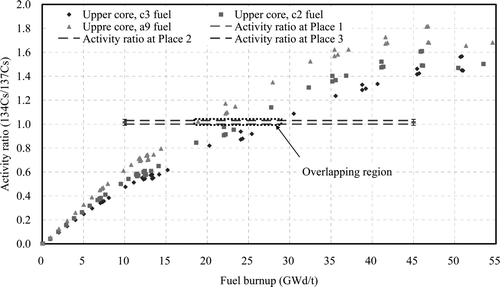
In the figures, the radioactivity ratios of the places 1, 2, and 3 are also shown with the errors. The dotted boxes are an approximate overlapping region of the calculation-based correlations and the activity ratios to 137Cs based on the measurements. The overlapped burnup ranges are from 18 to 29 GWd/t in the correlations. Endo et al. [Citation15] has worked on the correlation for radioactivity ratios of 134Cs to 137Cs based on the measured radioactivity in the soils outside of the nuclear power station. He reported that the activity ratios were 0.996 ± 0.07 and the estimated average burnup was 17.1 ± 1.5 GWd/t. Okumura [Citation16] also reported that the activity ratios obtained for contaminated water in the basements of the turbine buildings was from 0.92 to 1.0 and the estimated burnup was 20 GWd/t. Their estimation of burnup is lower than those in this study. Since their activity ratios are similar to the present study, the differences in the estimated burnup would be mainly attributed to the differences in the correlations used for the estimation of burnup. Their activity correlations were obtained by simple single fuel cell models and without considering the decrease in the activity ratios during the reactor shutdown for refueling and others.
3.1.2.2. Activity ratio of 238Pu to sum of 239Pu, and 240Pu
The compiled correlations of the radioactivity ratios of 238Pu and the sum of 239Pu, and 240Pu based on the calculated isotopic inventories are shown in for the upper core. In contrast to the radioactivity ratios of Cs isotopes, the correlations of the radioactivity ratios in Pu isotopes are less sensitive to the enrichments of fuel rods. The correlations reflect the differences in macroscopic cross-sections of the fuel and radial locations of the fuel rods, and the consequent differences in the neutron flux as those of the Cs correlations. In addition to that, higher enrichment rods tend to have steeper slopes due to that the origin of 238Pu is mainly 235U as mentioned before. In the figures, the radioactivity ratios of the places 1 and 3 are also shown with the errors. The dotted boxes are an approximate overlapping region of the calculation-based correlations and the radioactivity ratios based on the measurements. The overlapped burnup ranges are from 25 to 33 GWd/t in the correlations.
Figure 9. Calculation-based correlations of radioactivity ratios of 238Pu to the sum of 239Pu and 240Pu and radioactivity ratios for the places 1 and 3.
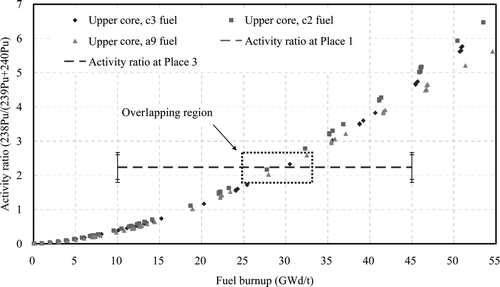
In addition to the calculation-based correlations, the experiment-based correlation was also compiled from the measured isotopic inventories of Pu isotopes for BWR fuels [Citation3,Citation9]. shows the obtained correlation. They included different types of BWR UO2 fuels. The enrichments of the fuel samples are 3.9 and 3.4 wt% for the 8 × 8-1 fuel, 4.5 and 3.4 wt% for the 8 × 8-4 fuel, 4.4 and 3.4 wt% for the 9 × 9-7. Those of the 9 × 9-9 fuel are those of the above mentioned lead use 9 × 9-9 fuel assemblies of 2F-1. The data include the activity ratios based on the measured isotopic inventories for the fuel samples ranging from the lower to upper axial locations. The figure includes the radioactivity ratios of the places 1 and 3 with the errors. The dotted box shows the overlapping region of the experiment based correlations and the radioactivity ratios of the places 1 and 3 considering the errors. The overlapped burnup ranges are from 22.5 to 36 GWd/t in the experiment based correlation.
shows the summary of the estimated burnup based on the activity ratios. It is observed that the estimated burnup based on the activity ratio of Pu isotopes was systematically larger than that on the activity ratio of Cs isotopes. However, the ranges of estimated burnup overlap each other. When the compiled correlations based on the calculated isotopic inventories for the lower position of the assembly (hereafter referred to as the “lower core”) were used, the estimated burnup was slightly larger by 3–5 GWd/t than that for the upper core as shown in . The calculation-based correlations for the lower core used in the present study are the same as those shown by the authors [Citation6].
Table 6. Summary of estimated burnup.
3.2. Activity ratio to 137Cs in fuel at shutdown
In order to estimate the ratio of AI Xi to AI 137Cs in Equation (1) in the fuel sourcing the deposited activity at the shutdown, four sets of calculated inventories were selected as representing inventories: two sets for the upper core, (1) initial 235U enrichment 4.9 wt%, 30.5 GWd/t and (2) enrichment 2.1 wt%, 27.9 GWd/t, and two sets from the lower core, (3) initial 235U enrichment 4.9 wt%, 33.6 GWd/t, and (4) enrichment 2.1 wt%, 28.7 GWd/t. The enrichments were selected to cover the most range of fuel enrichments normally used in the 9 × 9 fuel assemblies in 1F-1 to 3. The fuel burnup was selected to be middle of the above mentioned burnup estimations and the available calculation points of fuel rods which were calculated under the inputs of assembly-node average burnup. The above fuel burnups correspond to the assembly-node average burnup 28.5 and 30.9 GWd/t for the upper and lower cores, respectively. The reliability of the referred inventory calculations for the 9 × 9 fuel assemblies have been confirmed through the comparison of the calculated results with measurement assay data on long-half-life and stable isotopes in FP nuclides in Nd, Cs, Eu, Sm, Gd, and Pm [Citation3,Citation14]. The comparison is also scheduled for FP nuclides of Mo, Tc, Ru, Rh, and Ag.
The activity ratio to 137Cs of each isotope in the fuel at the shutdown is shown in for the two selected sets of the calculated inventories of the upper core. The values of 89Sr, 99mTc, 110mAg, 129mTe, 132Te, and 132I are not shown, since the adopted burnup chain for FP nuclides in the burnup calculations did not include those nuclides. The ratio of the activity ratio to 137Cs of each isotope in the deposited activity,
, in against that in the fuel at the shutdown,
, was calculated and are shown in . The values also correspond to the ratios of the deposited fraction of each element,
, against that of Cs,
, as shown in Equation (1). The values of 99Mo and 106Ru are shown as those for the place 1, for which the values of
were obtained by the special treatment as previously mentioned. The data in
illustrate the values for the fuel condition of 4.9 wt% and 30.5 GWd/t in as an example. The differences in
between the two sets of inventories for the upper core are not significant for the FP nuclides, and Pu and Am isotopes; on the other hand, those of Cm isotopes are large. shows the activity ratios to 137Cs for the two selected sets of the calculated inventories of the lower core. Since the inventories of Pu, Am, and Cm nuclides are relatively smaller in the lower core than those in the upper core due to relatively lower conversion ratio caused by an axial distribution in a steam void, the activity ratio to 137Cs in the fuel at the shutdown are smaller than those for the upper core for those nuclides. It makes larger the ratios of the activity ratios to 137Cs of those nuclides in the deposited activity against those in the fuel at the shutdown. As shown in and
, the orders of the deposited fraction of each element relative to Cs was estimated to be 10−4 to 10−2 for Sr, 10−5 to 10−3 for Nb, 10−2 to 10−1 for Mo, 1 to 10 for I, 10−3 to 10−2 for Ba, 10−2 for La, 10−6 to 10−3 for Pu, 10−6 to 10−4 for Am, and 10−7 to 10−5 for Cm. That of Ru, which was estimated to be 10−3 to 10−2, should be confirmed by further scrutiny.
Figure 10. Experiment-based correlations of radioactivity ratios of 238Pu to the sum of 239Pu and 240Pu and radioactivity ratios for the places 1 and 3.

Figure 11. Deposited activity fractions relative to 137Cs in the fuel conditions of 4.9 wt% and 30.5 GWd/t for the places 1–3. (a) FP nuclide and (b) actinide nuclide.
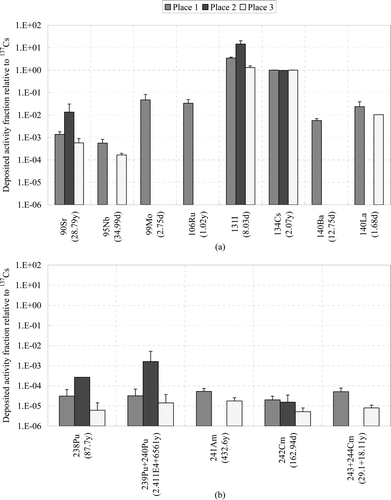
Table 7. Ratio of activity ratio to 137Cs of each isotope in the deposited activity,  , against that in the fuel,
, against that in the fuel,  , based on the upper core inventories at the shutdown.
, based on the upper core inventories at the shutdown.
Table 8. Ratio of activity ratio to 137Cs of each isotope in the deposited activity,  , against that in the fuel,
, against that in the fuel,  , based on the lower core inventories at the shutdown.
, based on the lower core inventories at the shutdown.
4. Conclusions
Based on the radioactivity measurements on the soil samples in the site of Fukushima Dai-Ichi Nuclear Power Station, the study to investigate the deposited activity fraction of the FP and heavy nuclides was performed. Using correlations of the activity ratios of 134Cs to 137Cs, and 238Pu to the sum of 239Pu and 240Pu against fuel burnup, the burnup of the fuel sourcing the deposited activity was estimated to be about 30 GWd/t. In this study, the activity in the fuel at the shutdown was obtained by the inventory calculations for the 9 × 9 fuel assembly using the estimated burnup. The fraction of activity deposited on the soil was obtained as the relative value to that of 137Cs. The obtained deposited fractions relative to Cs are the orders of 10−4 to 10−2 for Sr, 10−5 to 10−3 for Nb, 10−2 to 10−1 for Mo, 1 to 10 for I, 10−3 to 10−2 for Ba, 10−2 for La, 10−6 to 10−3 for Pu, 10−6 to 10−4 for Am, and 10−7 to 10−5 for Cm. That of Ru, which was estimated to be 10−3 to 10−2, should be confirmed by further study. The deposited fractions for Tc, Ag, and Te were not estimated due to the lack of the calculated inventories in the fuel for the relevant measured radioactive nuclides.
Figure A1. Decay chains of FP and heavy nuclides under activity measurement with half lives and cumulative fission yields of thermal fission of 235U in % (Y).
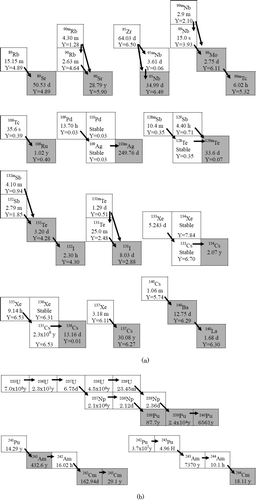
Table A1. Major core specifications of 1F-1, 2, 3, and 2F-1.
References
- Nishihara , K. , Yamagishi , I. , Yasuda , K. , Ishimori , K. , Tanaka , K. , Kuno , T. , Inada , S. and Gotoh , Y. 2012 . Radionuclide release to stagnant water in Fukushima-1 Nuclear Power Plant . Trans. At. Energy Soc. Jpn , 11 : 13 – 19 . in Jaanese
- Available at http://www.tepco.co.jp/cc/press/11032806-j.html (2011) [in Japanese]
- Yamamoto , T. and Kanayama , Y. 2008 . Lattice physics analysis of burnups and isotope inventories of U, Pu, and Nd of irradiated BWR 9 × 9-9 UO2 fuel assemblies . J. Nucl. Sci. Technol , 45 : 547 – 566 .
- http://www.tepco.co.jp/cc/press/11042207-j.html (2011) [in Japanese]
- http://www.tepco.co.jp/cc/press/11040609-j.html [in Japanese]
- Yamamoto , T. , Suzuki , M. and Ando , Y. 2012 . Burnup estimation of fuel sourcing radioactive material based on monitored Cs and Pu isotopic activity ratios in Fukushima N. P. S. accident . Proceedings of the International Conference on ICAPP’ 12 . June 24–28 2012 .
- Devell , L. , Tovedal , H. , Bergstrom , U. , Bergstrom , U. , Appelgren , A. , Chyssler , J. and Andersson , L. 1986), p . Initial observations of fallout from the reactor accident at Chernobyl . Nature , 321 : 192
- Roque , B. , Thiollay , N. , Marimbeau , P. , Tsilanizara , A. , Garzenne , C. , Marcel , F. , Toubon , H. and Garat , C. 2002 . Experimental validation of the code system “DARWIN“ for spent fuel isotopic predictions in fuel cycle applications . Proceedings of the International Conference on the PHYSOR 2002 . October 7–10 2002 .
- Yamamoto , T. and Yamamoto , Y. 2008 . Nuclear analysis of PIE data of irradiated BWR 8 × 8-2 and 8 × 8-4 UO2 fuel assemblies . J. Nucl. Sci. Technol , 45 : 1193 – 1214 .
- Okumura , K. , Mori , T. , Nakagawa , M. and Kaneco , K. 2000 . Validation of a continuous-energy Monte Carlo burn-up code MVP-BURN and its application to analysis of post irradiation experiment . J. Nucl. Sci. Technol , 37 : 128 – 138 .
- Nagaya , Y. , Okumura , K. , Mori , T. and Nakawasa , M. 2005 . MVP/GMVP II: General Purpose Monte Carlo Codes for Neutron and Photon Transport Calculations based on Continuous Energy and Multigroup Methods Naka , , Japan JAERI-1348, Japan Atomic Energy Institute
- Shibata , K. , Kawano , T. , Nakagawa , T. , Iwamoto , O. , Katakura , J. , Fukahori , T. , Chiba , S. , Hasegawa , A. , Murata , T. , Matsunobu , H. , Ohsawa , T. , Nakajima , Y. , Yoshida , T. , Zukeran , A. , Kawai , M. , Baba , M. , Ishikawa , M. , Asami , T. , Watanabe , T. , Watanabe , Y. , Igashira , M. , Yamamuro , N. , Kitazawa , H. , Yamano , N. and Takano , H. 2002 . Japanese evaluated nuclear data library version 3 revision-3: JENDL-3.3 . J. Nucl. Sci. Technol , 39 : 1125 – 1136 .
- Okumura , K. , Kugo , T. , Kaneko , K. and Tsuchihashi , K. 2007 . SRAC2006: A Comprehensive Neutronic Calculation Code system Naka , , Japan JAERI-Data/Code 2007-004, Japan Atomic Energy Research Institute,
- Suzuki , M. , Yamamoto , T. , Ando , Y. and Nakajima , T. 2012 . Analysis of burnup and isotopic compositions of BWR 9x9 UO2 fuel assemblies . Proceedings of the International Conference on the PHYSOR 2012 . April 15–20 2012 .
- Endo , T. , Sato , S. and Yamamoto , A. 2012 . Estimation of average burnup of damaged fuels loaded in Fukushima Dai-Ichi Reactors by using the 134Cs/137Cs ratio method . Proceedings of the International Conference on the PHYSOR 2012 . April 15–20 2012 .
- Okumura , K. 2011 . (3) Nuclear data for analysis of isotopic inventories in LWR fuel cycle . Nuclear Data News, No , 100 : 31 – 38 . Atomic Energy Society of Japan, Nuclear Data Division [Japanese]
- Tasaka , K. , Katakura , J. , Ihara , H. , Yoshida , T. , IIjima , S. , Nakashima , R. , Nakagome , T. and Takano , H. 1990 . JNDC Nuclear Data Library of Fission Products –Second Version Naka , , Japan JAERI-1320, Japan Atomic Energy Institute
- 1998 . Application for Establishment Permit of Modification of Unit 1 through 6 of Fukushima Power Station 1, Tokyo Electric Power Company, 1 June Japanese
Appendix 1: Decay chain of measured activity
The decay chains in Figure A1 show a major chain to be produced the relevant FP and heavy isotopes (highlighted by a dark color). The cumulative fission yields in thermal neutron fission of 235U are also shown as “Y” for the FP nuclides [17].
Appendix 2: Derivation of relative deposited fraction to that of Cs
Here AXi and A 137Cs are the activities of an isotope in the element X and 137 Cs, respectively. They are obtained by
Here NX and NCs are the atomic number densities of elements X and Cs, respectively, fXi and f 137Cs are the isotopic abundances of Xi and 137Cs, respectively, and λ X and λ 137Cs are decay constants of Xi and 137Cs, respectively, and the bottom suffixes R and I mean the values of the deposited material and the fuel at the shutdown, respectively. Therefore the ratios of the activity of Xi to 137Cs are expressed by
Appendix 3: Major core specifications of units 1, 2, and 3 of Fukushima Dai-Ichi Nuclear Power Station, and unit 1 of Fukushima Dai-Ni Nuclear Power Station.
Table A1 shows major core specifications of Units 1, 2, and 3 of Fukushima Dai-Ichi Nuclear Power Station, and Unit 1 of Fukushima Dai-Ni Nuclear Power Station [18].
